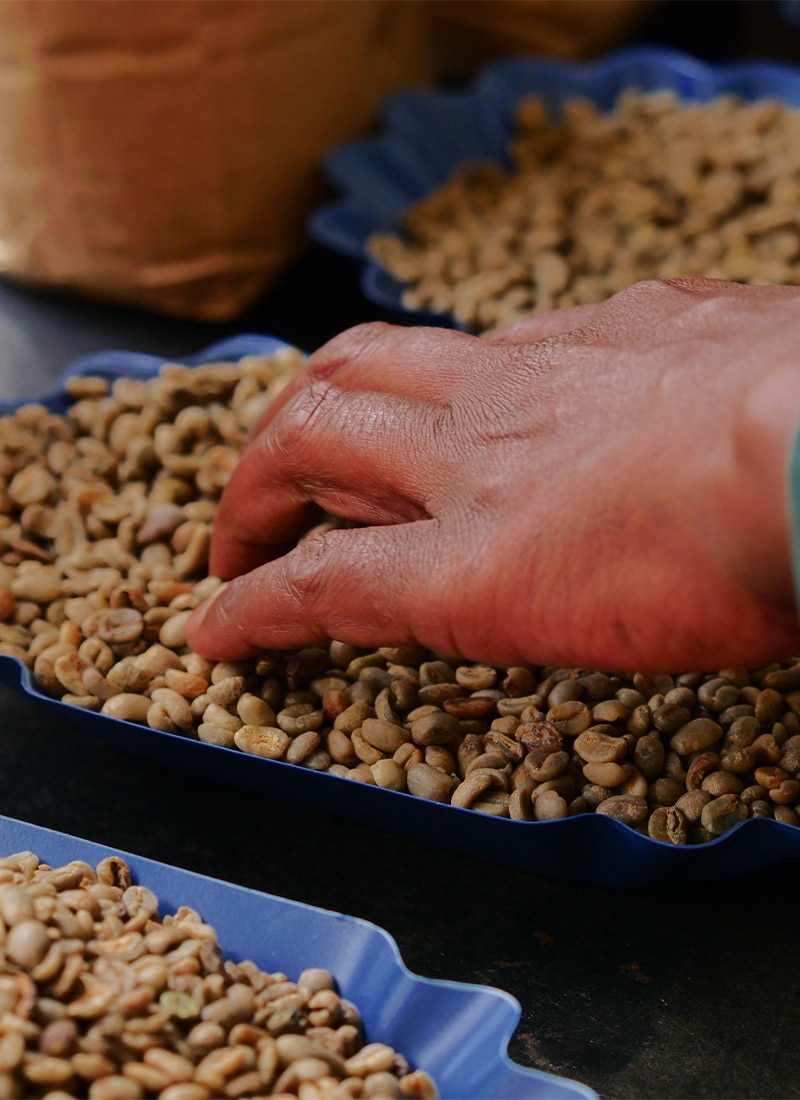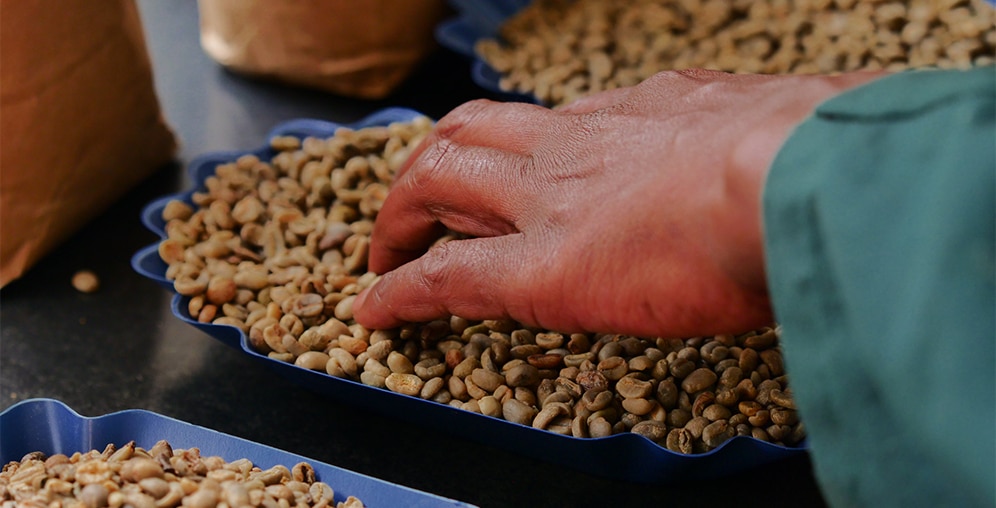Header
The Essence of Coffee, Bean Roasting


From bean to coffee, there are a total of 3 processes involved.
Roasting, grinding, and brewing, with bean roasting being
the crucial process that determines the taste and aroma of coffee.
The literal meaning of roasting is 'to bake', and in coffee,
'bean roasting' refers to applying heat to bake raw beans.
Mild roasting enhances acidity, while strong roasting
intensifies bitterness. Therefore, depending on the roasting level,
even the same raw beans can result in distinctly different flavors.
Improper roasting can make it difficult to bring out
the true flavor of even the finest beans.
This is why bean roasting is a very important part of coffee.
Nespresso has developed bean roasting profiles
to perfectly express the flavor of each bean.
Nespresso's roasting experts understand the unique
characteristics of beans and environmental factors, ensuring
that every coffee maintains its optimal taste consistently.
Coffee Roasting Methods
Drum Method

In drum roasting, beans are roasted as they rotate inside
a cylindrical drum. The raw beans are roasted as they are
heated inside rotating drums, and this process is also
known as direct flame roasting.
It allows for an intuitive perception of coffee taste and aroma,
and the machines used are economical and widely used
Hot Air Method
Hot air roasting, on the other hand, circulates hot air
among the beans to roast them. It enables uniform roasting
within a short period, making it suitable for
roasting large quantities of beans.
Coffee Roasting Process
Drying Phase

The drying stage is the first stage of roasting, in which
the drum is heated to remove moisture from
the coffee beans and lighten them. During this process,
the first cracks occur in the coffee beans, making their
acidity, bright color, and light body stand out.
In the drying stage, the roaster adjusts variables such as
roasting time, heating temperature, and drum speed
to proceed with the roasting. Additionally, conditions must
be set according to the characteristics of each coffee bean.
Improper drying conditions can result in loss of unique aroma
and flavor, so roasters must carefully control these variables.
pyrolysis
The pyrolysis step is a very important step in
the roasting process. At this stage, proteins and sugars
interact to cause chemical changes, releasing carbon dioxide
,and producing melaninin, which is responsible for the taste
and aroma of coffee, and various aromatic substances.
During this process, changes in color, shape, scent,
and sound occur, and at high temperatures above 150 degrees,
ingredients such as sugars, amino acids, and peptides
are decomposed by heat, causing various chemical reactions
to occur. This is a very important step because the combination
of chemicals formed at this stage determines the aroma
and taste of the coffee beans.
cooling
The cooling stage is the process of quickly cooling down
the coffee beans after they have been sufficiently roasted.
This step begins immediately after the beans leave the roasting
machine. It is important to quickly lower the temperature of
the coffee beans to suppress the chemical reactions
that continue to occur inside the coffee beans.
The cooling step balances the properties of the beans
after the roasting process is complete.
If cooling is not done sufficiently, a chemical reaction may
continue inside the coffee beans, damaging the taste
and aroma of the coffee beans. Additionally, this step quickly
removes any moisture remaining in the coffee beans,
reducing the risk of mold or spoilage.
Therefore, the appropriate cooling stage is very important
to maintain the unique taste and aroma of coffee beans.
Coffee roasting reaction
Maillard Reaction
Various flavors emerge during the coffee roasting process,
largely due to the Maillard reaction occurring in the beans.
This chemical reaction involves the combination of
amino acids from the bean's protein with carbonyl compounds
from sugars, forming new molecules.
These newly created molecules contribute to
the diverse flavors found in coffee,
such as the roasted grain and sweet caramel aromas.
Caramelization
Another chemical reaction occurring during roasting is
caramelization. This reaction occurs slightly later than
the Maillard reaction. Sugars encounter heat, oxidize,
and cause the bean's surface to turn brown, producing
distinct aromas. Despite the name, caramelization actually
decreases sweetness and increases bitterness in the coffee.


coffee roasting steps
8 levels of classification according to coffee bean roasting


Coffee beans are classified into 8 categories based on
the degree of roasting. Terms like 'French' or 'Italian'
are based on the roasting style preferred in each country.
Green Beans / 22°C
Refers to the raw state of the beans before roasting.
Cinnamon / 196°C
Light tan in color with a strong acidity.
Medium / 205°C
Medium brown with both sweetness and acidity still present.
Bitterness is reduced, and hints of sweetness can be tasted.
Also known as "American Roast."
High / 210°C
Light brown, the most common stage.
Sweetness becomes more pronounced as acidity decreases.
City / 219°C
Medium brown, showcasing roasting characteristics well.
Used in specialty coffee to highlight the origin's
characteristics and also called "German Roast."
Full City / 225°C
Rich brown with moderate sweetness and bitterness.
This roast is suitable for espresso.
French / 240°C
Dark brown, bitterness increases significantly
while sweetness and acidity diminish, highlighting
roasting characteristics over origin flavors.
Italian / 245°C
Completely dark black beans with intense bitterness,
almost no sweetness remains.
It is surprising that there are so many processes
behind a cup of coffee.
Let's check out Nespresso's coffee story!







